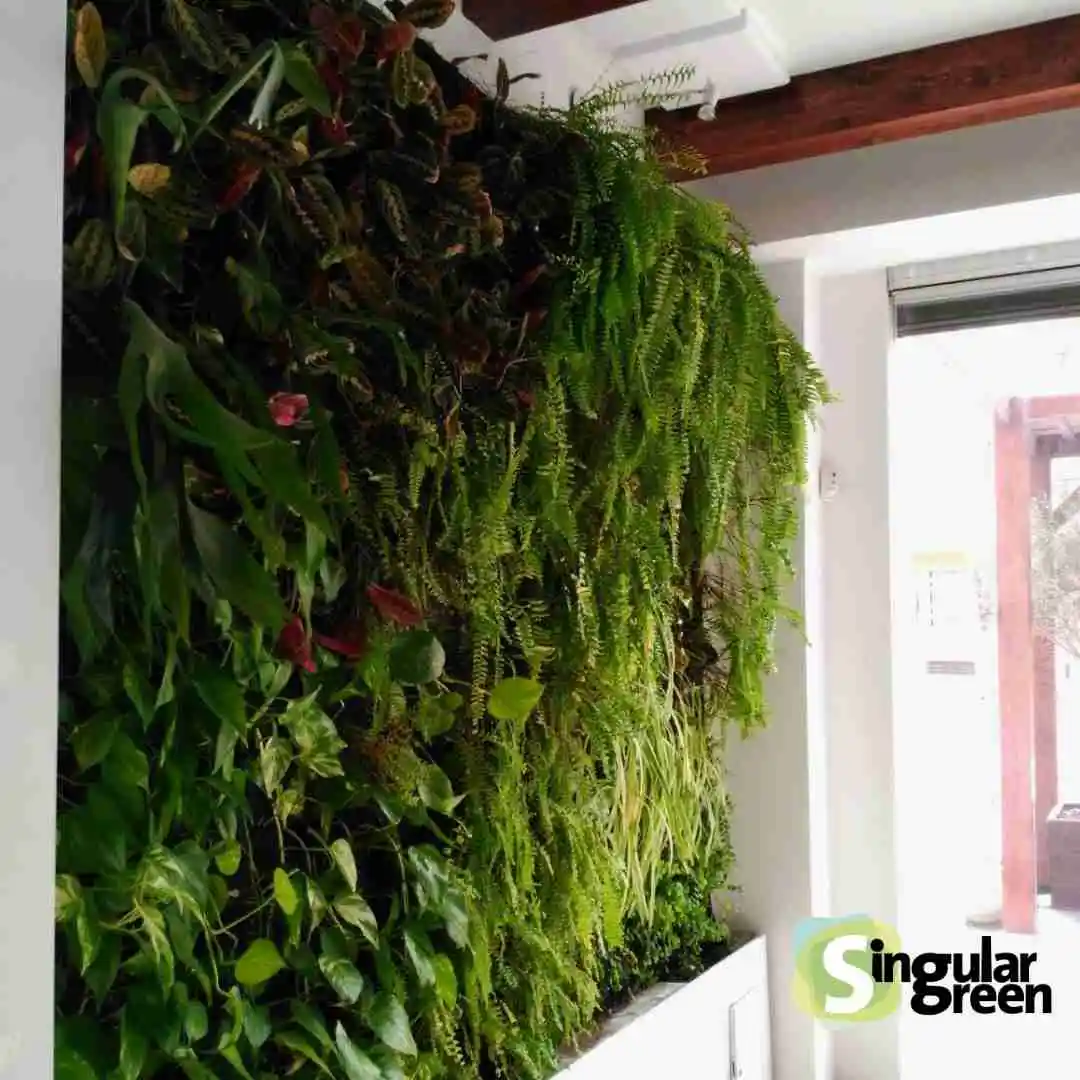Vertical gardens are gaining popularity for their ability to maximise space, decorate walls and, in some cases, provide a small vegetable garden at home.
Creating one is easier than it sounds, but before you get started, it’s important to be clear about some key aspects of what kind of garden you want and how to maintain it.
Why create a vertical garden at home?
Vertical gardens are not only an aesthetic solution for any space, but also provide a number of practical and decorative benefits.
Whether you want to grow your own aromatic herbs or simply bring life to your walls, vertical gardens are an excellent option.


Benefits of vertical gardens
One of the great attractions of vertical gardens is that they allow you to take advantage of small spaces, such as walls or terraces, to have a green area without taking up land.
They also help to improve air quality and can be an excellent way to disconnect from daily stress.
Decorative gardens vs. vertical gardens
The first thing you should ask yourself is: Why do you want a vertical garden?
It is not the same to have a vertical garden, where you will plant seasonal vegetables, as it is to have a decorative garden with indoor plants.
If you decide to have a vegetable garden, as I mentioned in my personal experience, you have to take into account that plants require specific care and a short life cycle. For example, a tomato will bear fruit between April and September, and then you will have to replace it with another plant such as lettuce.
On the other hand, if you are looking for a simply decorative garden, with plants such as potos or ferns, maintenance will be much easier, and the plants will last much longer.
Materials needed for a DIY vertical garden
Depending on the type of vertical garden you want, the materials will vary, but in general terms, you will need:
- Pots or support structures (such as pallets).
- Suitable substrate for the plants.
- Watering system, which can be manual or automatic.
Watering systems and substrate
If you plan to make a vertical vegetable garden, the substrate is key, as edible plants need a soil rich in nutrients.
In addition, you should bear in mind that, as they are fast-growing plants, they require more constant watering.
There are automatic systems, like the ones we use at Singular Green, where the garden waters itself and you can forget about it. But if you enjoy DIY and prefer something more artisanal, you can use pots and water them manually.
How to choose the type of plants for a do it yourself garden
If you opt for a decorative garden, plants such as ferns, potos and ribbons are ideal for indoors. If you prefer something more functional, such as a vegetable garden, you should think about short-cycle plants such as lettuces, tomatoes, or aromatic herbs.
Types of DIY: vertical gardens you can make
There are different methods for creating vertical gardens, from the simplest to the most sophisticated. Here are two popular options that you can adapt depending on the space and time you have.
Vertical gardens with pots
This is one of the simplest methods. It involves installing a structure on the wall where you can hang several pots. It is perfect for indoors or outdoors, and if you opt for small indoor plants, the maintenance will be minimal. You can customise the pots to match the décor of your home.
Pallet gardens: the easy DIY method
Another popular option is to use pallets. As explained in several DIY tutorials, you can recycle an old pallet and adapt it to hang pots or plant directly on it. It is ideal for small spaces and has a very interesting rustic touch.
Automatic and manual systems: which one to choose?
Technology has arrived in the world of vertical gardens, and nowadays you can choose between automatic systems that practically take care of themselves, or simpler and more economical solutions.
Vertical gardens with automatic irrigation
If you prefer a more technological approach and want to forget about maintenance, as I mentioned before, at Singular Green we offer automatic watering systems that are perfect for larger gardens. These systems include rockwool panels and a programmed watering system that ensures your plants are always in top condition.
Solutions for vertical gardens at home
For those who prefer a vertical garden, you should know that it requires more dedication. Tomatoes, for example, are a plant that needs a lot of care: you can be faced with pests such as whitefly, so you will need to be prepared to treat the plants. However, vertical gardens are very rewarding if you enjoy the process of planting and harvesting.
Steps to building your own DIY vertical garden
Step 1: Define the purpose of your garden
Before you start, ask yourself what you want your vertical garden for. If you want something decorative, the choice of plants will be different than if you are looking for a vegetable garden.
Step 2: Choose materials and tools
Based on your decision, select the materials you will need. You can use pallets, pots or even more advanced structures with irrigation systems.
Step 3: Assembly and maintenance
The assembly will depend on the type of structure you have chosen.
If it is a simple system with pallets, you will only need to hang it on the wall, add the substrate and the plants. If you opt for an automatic system, you will save time in the future, as the garden will water itself.
DIY Vertical gardens






